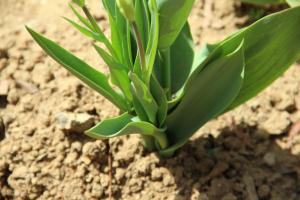Should You Plant Tomatoes in the Same Place Every Year?
As any gardener knows, crop rotation is an important part of ensuring a healthy and bountiful harvest. But does this apply to planting tomatoes as well? Should you avoid planting them in the same spot year after year?
The Risks of Planting Tomatoes in the Same Place Every Year
There are several risks associated with planting tomatoes in the same place year after year. One of the biggest concerns is the buildup of pathogens and pests in the soil. These can easily infect new plants and lead to stunted growth, lower yields, and even complete crop failure.
Additionally, planting tomatoes in the same spot can lead to soil depletion, as the plants draw on the same nutrients year after year. This can result in weaker plants, smaller fruits, and an increased susceptibility to diseases and pests.
The Benefits of Crop Rotation
Rotation of crops is a standard practice to disrupt pathogens, pests and disease cycles, and replenish soil nutrients. It involves moving crops around the garden, so that no one plant grows in the same place for at least a few years. This facilitates healthy soil, healthy growth, and healthy crops.
Crop rotation provides several benefits. By changing the types of crops you grow in a particular area, you reduce the likelihood of soil-borne pests and diseases. Additionally, different crops require different nutrients from the soil, so rotating crops helps to ensure that the soil remains balanced and fertile over time.
Alternatives to Crop Rotation
If crop rotation is not possible, there are a few things you can do to minimize the risks of planting tomatoes in the same place year after year. One option is to add organic matter, such as compost, to the soil to help replenish the nutrients that the plants draw on. Another option is to use raised beds or containers that allow you to control the soil more effectively.
Conclusion
In conclusion, while it is possible to plant tomatoes in the same place every year, doing so carries risks that can ultimately harm your crop. By using crop rotation or alternatives to minimize the risk of soil depletion and pest infestation, you can enjoy healthy and fruitful tomato plants year after year.

 how many times do yo...
how many times do yo... how many planted tre...
how many planted tre... how many pine trees ...
how many pine trees ... how many pecan trees...
how many pecan trees... how many plants comp...
how many plants comp... how many plants can ...
how many plants can ... how many plants and ...
how many plants and ... how many pepper plan...
how many pepper plan...






























